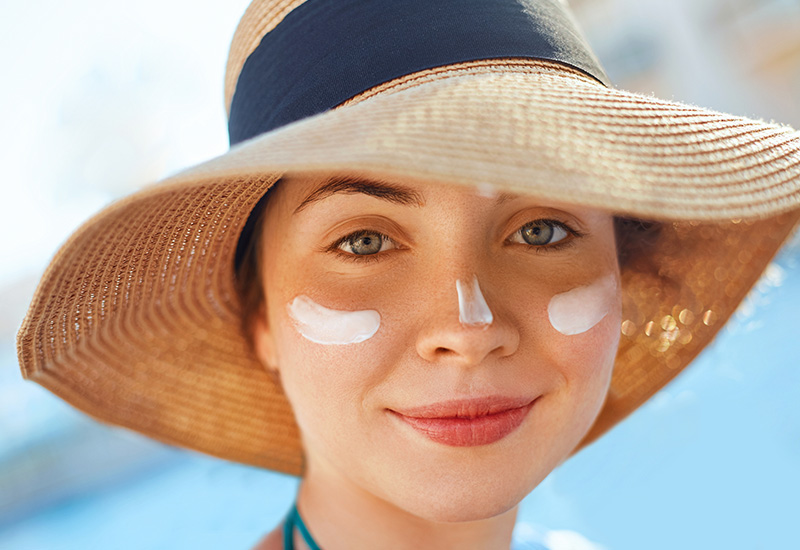The sun is finally making an appearance. Our winter-white bodies are being exposed for another year and our soon-to-be-bronzed skin will once more give us a feel-good factor as we work hard to develop our sun-kissed look.
There are other benefits from being in the sunshine and one is vitamin D, although 15-20 minutes of outdoor sunshine is enough for our daily dose.
Unfortunately, the sun can be a factor in one problem which we can’t ignore: skin cancer. With rising cases of skin cancer, early detection is vital. If you are sunbathing, it is imperative that you use an SPF of no less than 30 and apply it liberally every two hours and again after swimming.
Skin cancer does not discriminate, but those who are more likely at risk are:
- A fairer skin
- Sunbed user
- Someone who regularly burns their skin
- Outdoor workers
- Outdoor sports enthusiasts
- Mature skin
- Someone with 100 moles or more
- A family history of skin cancer.
The sun emits three types of rays and without sun cream, they have the ability to penetrate into different layers of the skin. Even after your tan has faded, the damage remains and can result in serious consequences.
Always try to stay out of the sun when it’s at its hottest, i.e. between 11 and 3 pm. Wear a hat that is wide-rimmed and close-woven or made of UPF fabric. Wear sunglasses with a European CE mark and a EPF label for the best protection. Keep your shoulders protected with a t-shirt or a sun protection fabric.
Skin cancer is divided into two groups.
Non-melanoma skin cancer or NMSC Melanoma. The two most common NMSCs are basal cell carcinoma and squamous cell carcinoma.
The basal cell type is most common and can appear on sun-damaged areas. It very rarely spreads and is slow-growing.


The squamous cell carcinoma is the second most common. This one can spread and can vary in size and usually appears on the neck, lips, ears and arms.
Then we have the melanoma category. This can appear anywhere on the body. It can vary in shape, colour and size and generally starts as a spot or mole that changes over time. There is also nodular melanoma. The most aggressive form. It generally appears on sun-exposed areas and is more even in shape and is more of a bump. These can vary in colour.
One technique used for detection is called “the ugly duckling”. this simply means you should get anything that looks unsightly and different to anything else on your body checked by a dermatologist.
As a therapist, I feel it’s my duty to inform my clients if I see something that has changed over time during their visits. I tend to make notes on anything I see and early detection has helped some of my clients get the right treatment.
Knowledge is key, and as much as we all will be enjoying the summer, let’s do it safely and wisely and be aware of any changes on your skin.
Donna Groom is a therapist at the Kutting Room in Praia da Luz.













